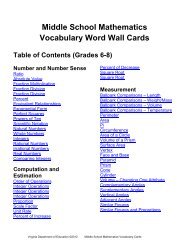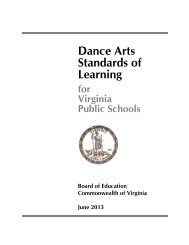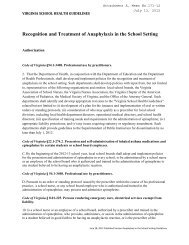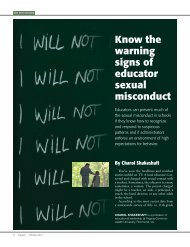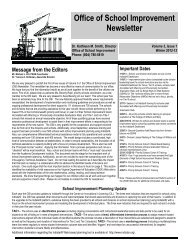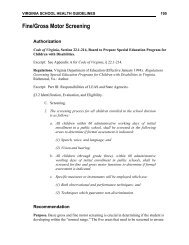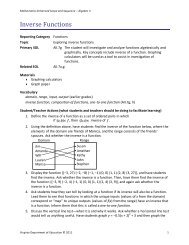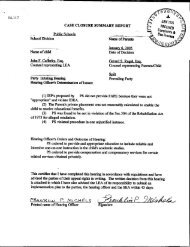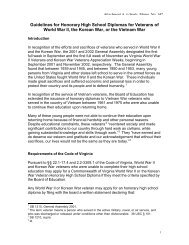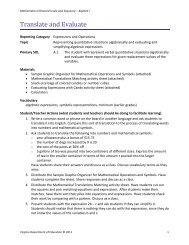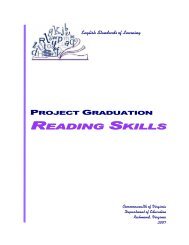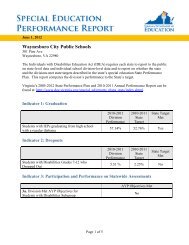What Makes Something Alive - Virginia Department of Education
What Makes Something Alive - Virginia Department of Education
What Makes Something Alive - Virginia Department of Education
You also want an ePaper? Increase the reach of your titles
YUMPU automatically turns print PDFs into web optimized ePapers that Google loves.
Activity reprinted with permission from Twenty / Twenty; Projects and Activities for WILD School Sites, Ohio Division <strong>of</strong> Wildlife.<br />
For information about <strong>Virginia</strong>‟s WILD School Sites program visit www.dgif.virginia.gov/education<br />
Insect Safari Lesson Plans<br />
Insect Safari<br />
Learning objectives: Students will be able to: 1) describe the relationship between insect<br />
structure and function and 2) recognize that wildlife includes both small and large animals in a<br />
variety <strong>of</strong> forms.<br />
Method: Students will explore the school site for insects.<br />
Background:<br />
Wildlife is diverse. Wild animals occur in a variety <strong>of</strong> forms that help them exist in a wide variety<br />
<strong>of</strong> habitats. Many people only think <strong>of</strong> familiar birds and mammals as wildlife. Wildlife, however,<br />
includes fish, reptiles, and amphibians. Wildlife also includes insects, spiders, worms and<br />
invertebrates.<br />
In a number <strong>of</strong> species and by actual count, insects far exceed all other groups <strong>of</strong> animals. Ants,<br />
grasshoppers, dragonflies, sow bugs and other crawling and flying “bugs’ come in a tremendous<br />
variety <strong>of</strong> forms, and exist in almost every imaginable habitat, including every school site in the<br />
world.<br />
From school building windows and cracks in the sidewalk, to grassy fields and the open air,<br />
insects are everywhere.<br />
Wildlife diversity refers to the number <strong>of</strong> different kinds <strong>of</strong> wild animals living in an area. One<br />
way to assess the general environmental quality <strong>of</strong> an area is to evaluate its ability to support a<br />
variety <strong>of</strong> wildlife. The more diverse the habitat, the more likely different kinds <strong>of</strong> wildlife can live<br />
there. By examining the diversity <strong>of</strong> insects collected at different locations on the school site,<br />
some relationships between insect diversity, habitat diversity and how each depends on and<br />
interacts with the other can be inferred.<br />
By collecting and examining insects from a variety <strong>of</strong> places on and around the school site,<br />
students begin to appreciate the concept <strong>of</strong> diversity and the variety <strong>of</strong> form and related<br />
functions among the insects.<br />
Materials:<br />
Students might begin by examining micro-habitats with the classroom or school building. Even<br />
in the cleanest building you can usually find evidence <strong>of</strong> living or dead insects. Look around<br />
baseboards, in corners, around light fixtures, and behind books and other items on shelves for<br />
moths, ants, flies and other insects.<br />
Any living insects can be gently swept into a temporary container using a small paint brush.<br />
34<br />
<strong>Virginia</strong> Animals and their Habitats<br />
Topic 2 – Session 2.2<br />
Insect Safari Lesson Plans



